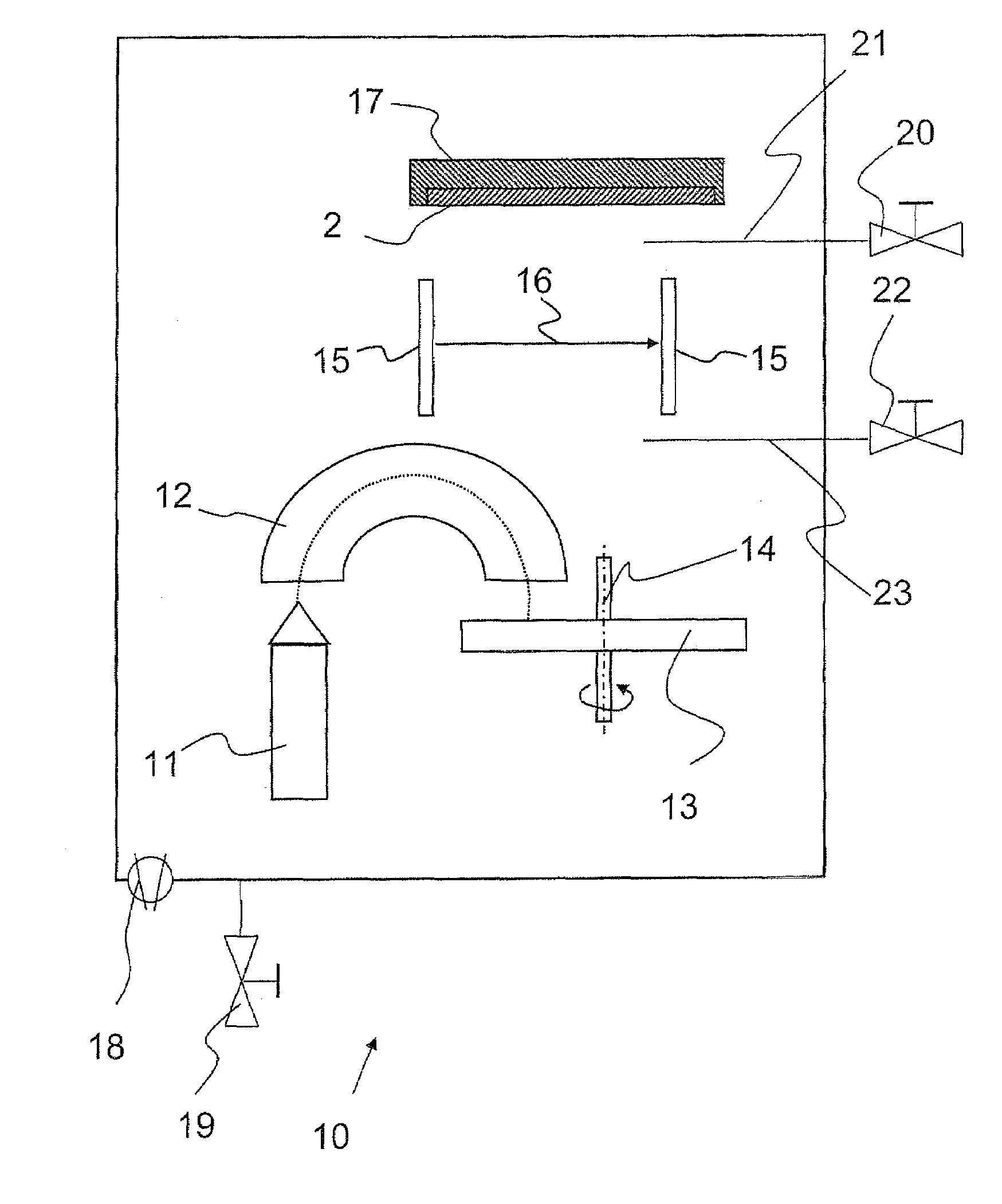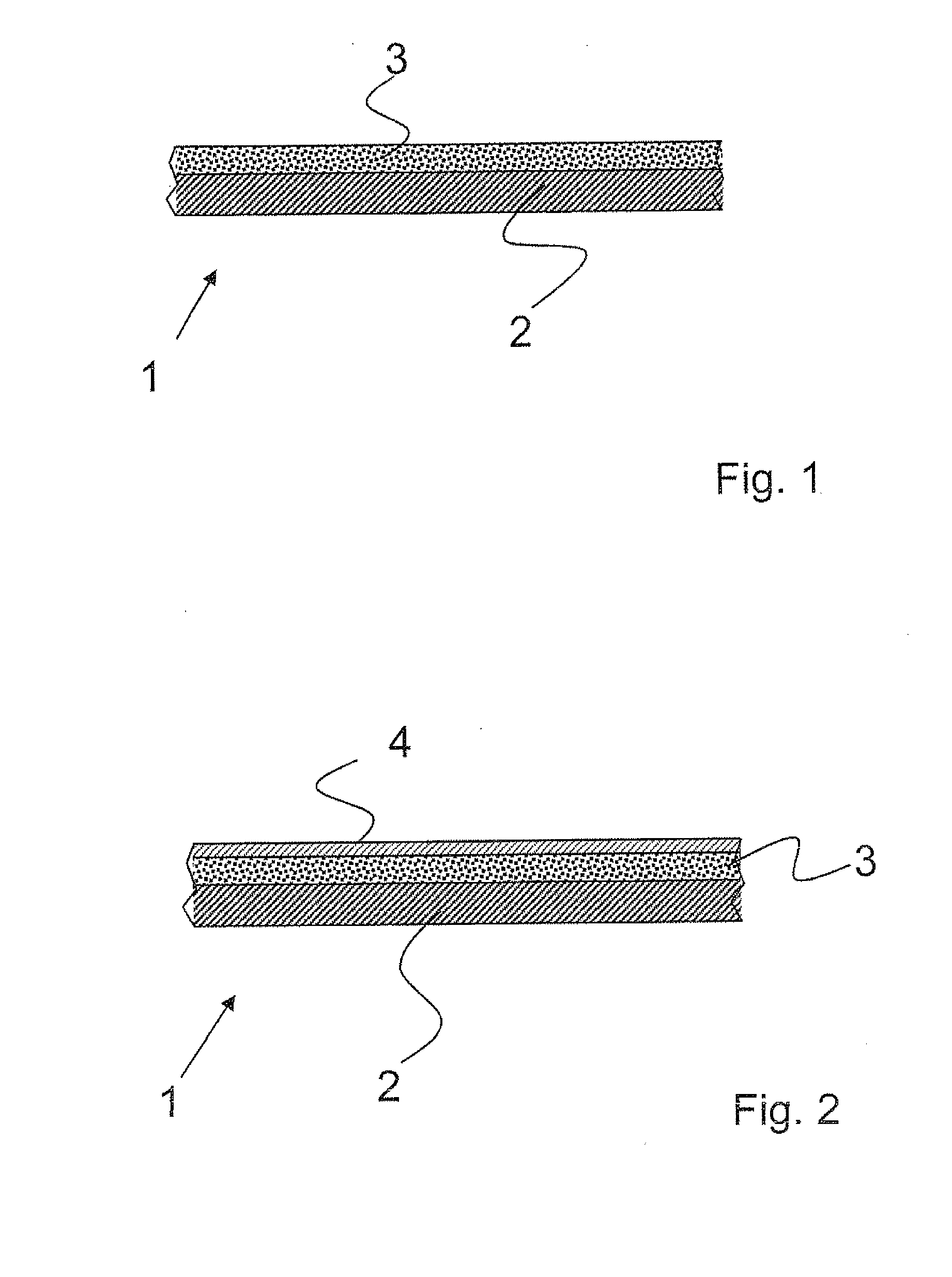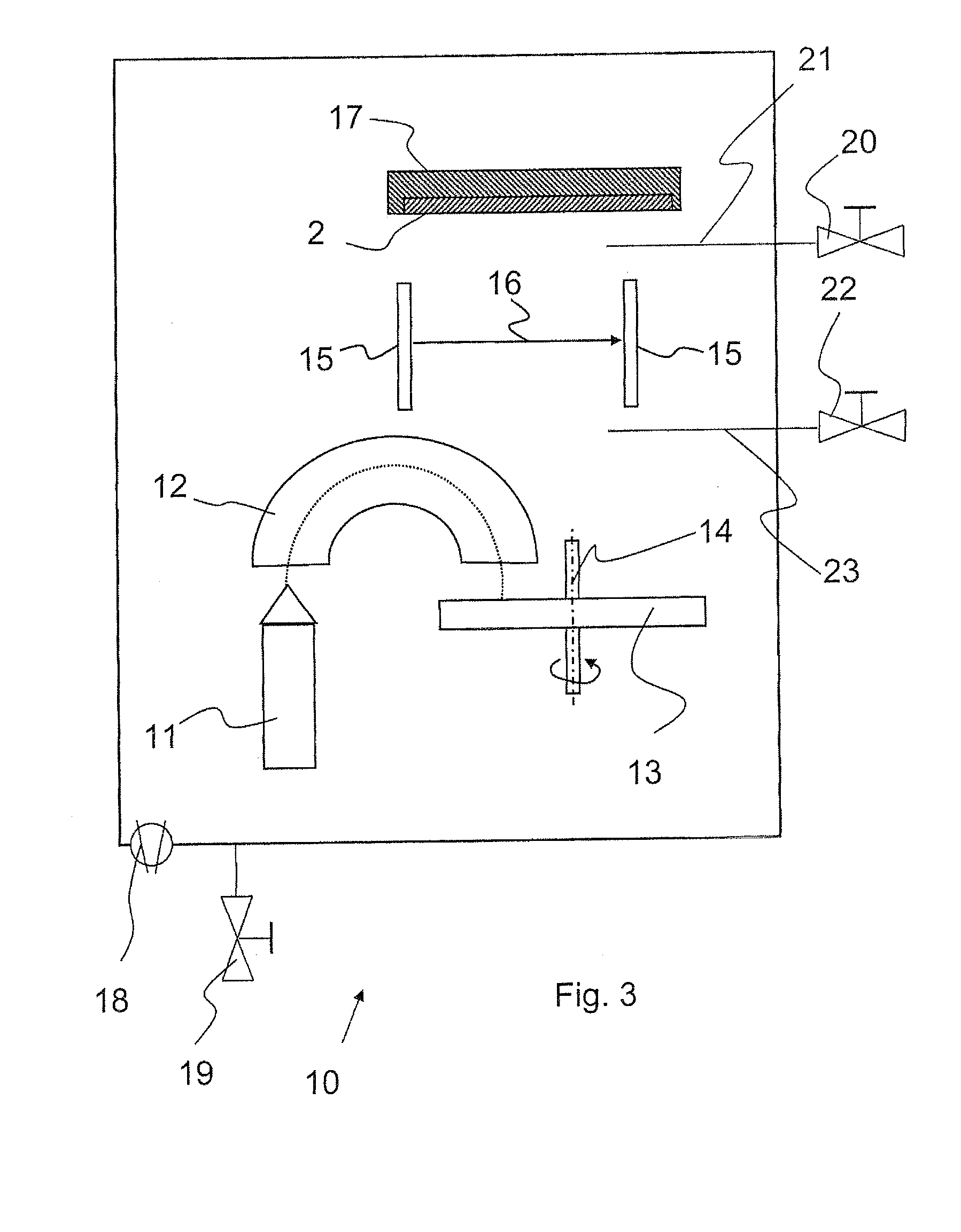Method for applying a porous glass layer
- Summary
- Abstract
- Description
- Claims
- Application Information
AI Technical Summary
Benefits of technology
Problems solved by technology
Method used
Image
Examples
first embodiment
[0087]Membranes may be provided by means of the invention. In the invention, the porous glass layer is in this case deposited on a support substrate, and the support substrate is then thinned and at least partially removed. Both chemical and mechanical methods are suitable for the thinning. Thus, it is possible to use a substrate which can be dissolved or etched away.
second embodiment
[0088]In the invention, a substrate is omitted so that its removal is obviated.
[0089]For example, according to the invention provision is made to use the composite material in electrochemistry. The material is in this case distinguished by a high corrosion resistance even at elevated temperatures, and by mechanical robustness.
[0090]A porous glass layer has good wetting properties, in particular for water-soluble compounds.
[0091]When deposited on a polymeric support material or a metal substrate, a membrane which is formed from a composite material according to the invention may be used in fuel cells.
[0092]In contrast to conventional polymer membranes, such a membrane with a glass layer has the advantage that it is substantially less susceptible to an ageing process.
[0093]By suitably adjusting the porosity, it is possible to generate ion-selective membranes. For example, provision is made to use an ion-selective membrane for accumulators, in particular for lithium ion cells. The tran...
PUM
| Property | Measurement | Unit |
|---|---|---|
| Temperature | aaaaa | aaaaa |
| Length | aaaaa | aaaaa |
| Time | aaaaa | aaaaa |
Abstract
Description
Claims
Application Information
 Login to View More
Login to View More - R&D
- Intellectual Property
- Life Sciences
- Materials
- Tech Scout
- Unparalleled Data Quality
- Higher Quality Content
- 60% Fewer Hallucinations
Browse by: Latest US Patents, China's latest patents, Technical Efficacy Thesaurus, Application Domain, Technology Topic, Popular Technical Reports.
© 2025 PatSnap. All rights reserved.Legal|Privacy policy|Modern Slavery Act Transparency Statement|Sitemap|About US| Contact US: help@patsnap.com



